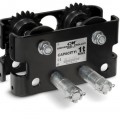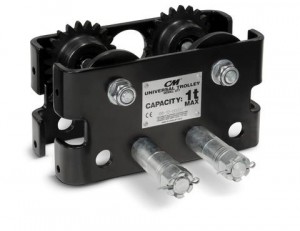Attachments & Accessories For Forklifts
Modern machines are capable of many different tasks and applications. Each of which can be enhanced with the use of construction attachments & accessories. When some equipment owners buy a new machine to perform a specific task, another machine owner will find an attachment or accessory, giving the same piece of machinery the extended ability to perform the additional required tasks.
For example, forklifts are capable of lifting, moving, and transporting a variety of materials on pallets. They can also lift equipment and machinery that is otherwise, too heavy to lift. However, a forklift can be much more than a transportation tool.
With an inexpensive attachment, you can turn most forklift trucks into a man lift that is just as safe and efficient as purchasing a scissor lift or any other style of man lift.
Another piece of machinery that could be purchased for use in an industrial facility would be an overhead crane. There are large-scale applications where a use of a crane is the best equipment for the job. Most indoor applications can be completed with the use of a boom attachment, which allows your forklift to reach farther than ever before and lift just about anything within the machine’s weight limitations with ease.
There are many other forklift attachments and accessories. Construction workers everywhere are utilizing a variety of different fork setups, sizes and shapes for specific applications and some with smaller boom attachments known as spears. Although, forklifts are not the only machines with useful accessories and attachment
Construction Attachments & Accessories For Skid Steer Loaders
Skid steer loaders are similar to forklifts in that they are capable of many different functions along with their originally designed purpose.
Skid steer loaders are equipped with a front bucket and are used to scoop, scrape, and transfer many different types of material. However, with the right attachment, these powerful machines are capable of so much more.
For example, if you attach a skid steer boom, the loader can lift and transport any machine or piece of equipment that is within its weight limit and can be attached from above.
Another accessory would allow the skid steer to rip up stumps out of the ground. This attachment is known as a stump grapple bucket. Other types of grapples are available which attach to the front of the skid steer and are designed with sharp grooved edges used to grab things like bushes or branches. These can also be used for pulling rooted plants from the ground as well as debris and clean up.
One more type of accessory available for most skid steer loaders is a hydraulic breaker attachment. There are a large variety of hydraulic breakers that can be used for chipping, chiseling, blunt impact, tamping, and cutting asphalt. This type of construction attachment is also available for compact excavators.
Other Construction Attachments & Accessories
Lift trucks, loaders, and excavators are not the only construction machines that benefit from the use of accessories or attachments. In fact, most machine tools on the market have some sort of optional hardware or attachment that will add to the machine’s capabilities.
When the cost of an additional piece of equipment seems to high, an attachment or accessory for the existing equipment can usually be found and purchased at a fraction of the cost.

